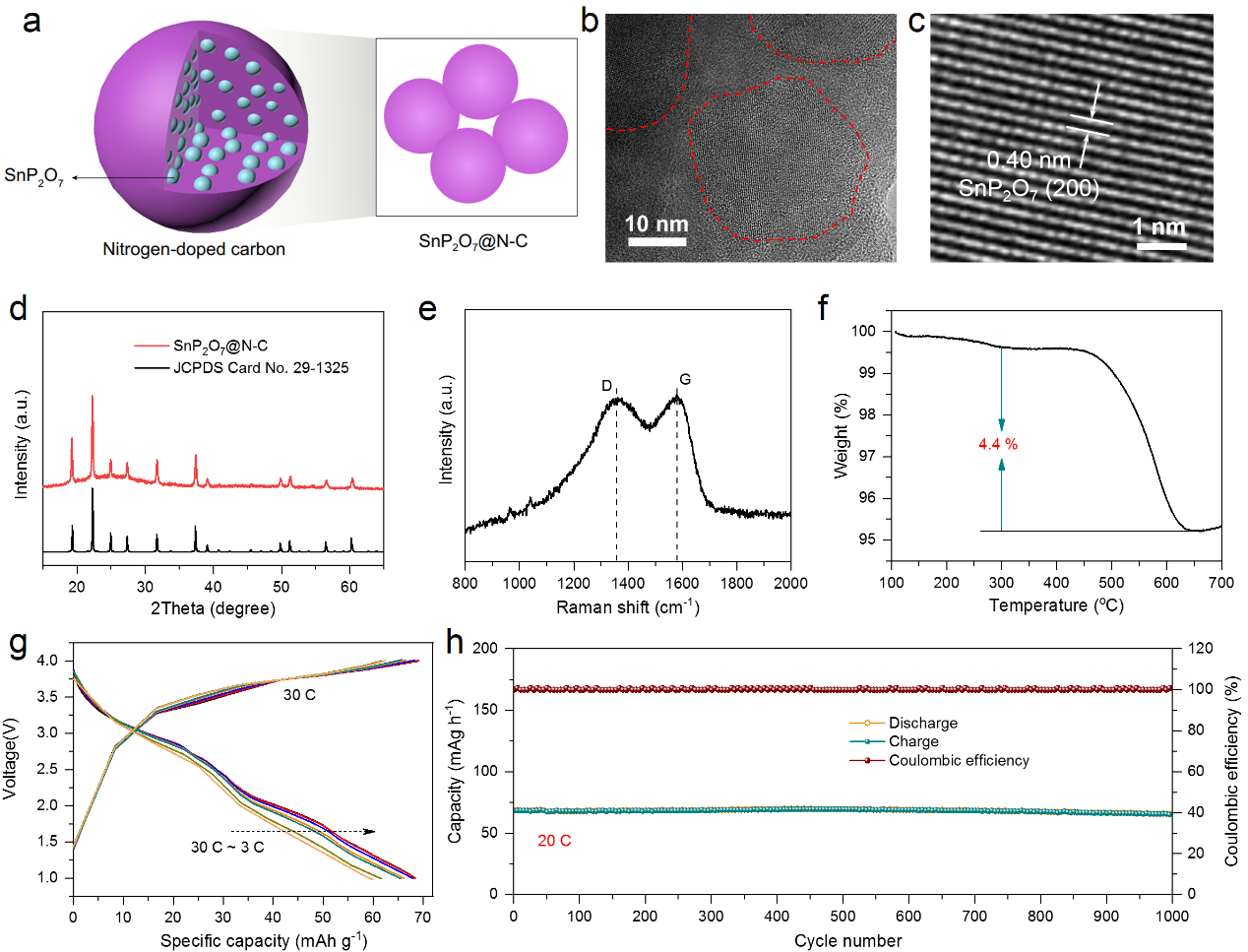Scientists Propose Ultrahigh-Fraction Active Anode for Sodium Dual-Ion Batteries
Date:09-09-2020 | 【Print】 【close】
Sodium-based dual-ion batteries (Na-DIBs) present great potentials for large-scale energy storage applications for the merits of high efficiency, low cost, and environmental friendliness.
However, the large ionic radius of Na+ results in sluggish reaction kinetics and large volume changes of the anode materials. The common design strategies are nanoscale modification and carbon-based composite construction. Nevertheless, the excessive carbon content (commonly >15 wt%) would decrease the fraction of active material and thus reduce the energy density of batteries. Therefore, it is necessary to reduce the content of inactive carbon without compromising the conductivity of composite anodes, so that anodes can effectively deliver their specific capacities.
A research group led by Prof. TANG Yongbing and his team members (MU Sainan, Dr. LIU Qirong etc.) from the Shenzhen Institutes of Advanced Technology (SIAT) of the Chinese Academy of Sciences, in collaboration with Dr. KIDKHUNTHOD Pinit from Synchrotron Light Research Institute, Thailand, have proposed a molecular grafting strategy to one-step in-situ synthesize a composite anode (SnP2O7@N-C) with ultrahigh-fraction active material for Na-DIBs.
The SnP2O7@N-C endowed with an ultra-high fraction of active material (95.6 wt%), among the highest value for previously reported carbon-based composite anode materials. Remarkably, the molecular grafting strategy enabled active nanodots to uniformly implant in the carbon matrix and to effectively prevent the exfoliation of active materials, while the nitrogen doping contributes to high conductivity even at a low carbon content.
Such the strategy bestowed the SnP2O7@N-C anode with excellent Na+-ion storage performance, including high capacity of 400 mAh g-1 and excellent cycling stability of 1200 cycles. Furthermore, this anode was paired with graphite cathode to yield a proof-of-concept Na-DIB, showed a superior rate capability up to 30 C, good fast-charge/slow-discharge ability, and long-term cycling life with a capacity retention of ~96 % after 1000 cycles at 20 C.

Figure. (a) Structural scheme of SnP2O7@N-C with high-fraction active material, and (b-c) corresponding TEM iamges. (d) XRD pattern, (e) Raman spectrum, and (f) TGA result, suggesting that the C content is only 4.4 wt%. Electrochemical properties of the Na-DIB assembled with SnP2O7@N-C anode and graphite cathode: (g) fast charge/slow-discharge performance and (h) long-term cycling performance. (Image by Dr. LIU Qirong)
Media Contact: